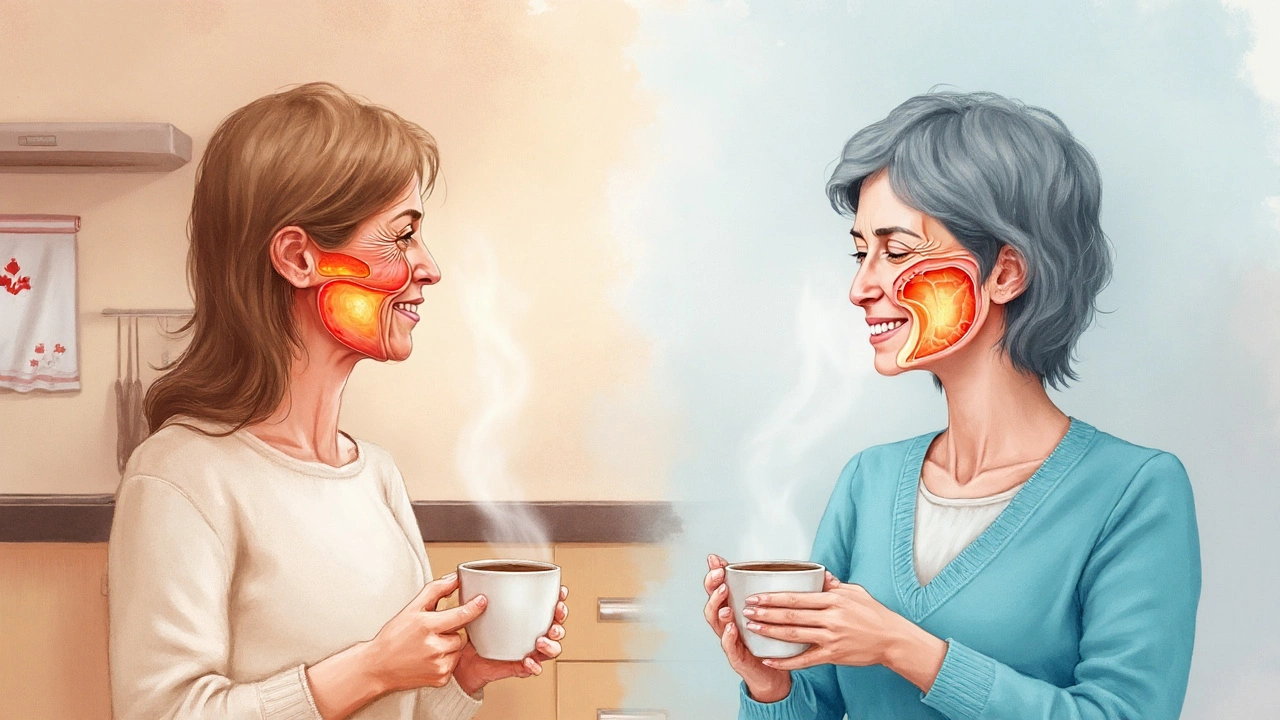Sinus Problems: What Causes Them and How to Find Fast Relief
If your nose feels stuffy, you’re pressure‑full, or you keep getting a runny nose, chances are you’re dealing with a sinus problem. Most people think of a cold, but sinuses can stay irritated for weeks, making everyday life miserable. The good news? You don’t need a prescription for every episode, and a few simple habits can cut the misery in half.
Why Your Sinuses Get Blocked
Sinus cavities are air‑filled spaces behind your cheekbones, forehead and eyes. They line up with tiny openings called ostia that let mucus drain out. When those openings swell or get clogged, mucus builds up and creates pressure. Common culprits include:
- Allergies: Pollen, dust mites, pet dander – they trigger inflammation just like a cold would.
- Upper‑respiratory infections: A cold or flu inflames the lining, making drainage slow.
- Dry indoor air: Dryness dries the mucus, making it thick and sticky.
- Deviated septum or nasal polyps: Physical blockages that keep the sinuses from draining.
- Smoking and pollutants: Irritants inflame the sinus lining and worsen congestion.
Understanding the trigger helps you pick the right remedy. If allergies are the main driver, antihistamines or nasal steroids usually do the trick. If a virus is the cause, soothing the symptoms while your body fights it off is enough.
Fast Relief and When to Seek Help
Here are three quick, low‑cost ways to clear a blocked nose today:
- Steam inhalation: Fill a bowl with hot water, drape a towel over your head, and breathe the steam for 5‑10 minutes. The warm moisture loosens thick mucus and eases pressure.
- Saline nasal rinse: Use a squeeze bottle or neti pot with a salt‑water solution. Rinsing clears out debris and reduces swelling without any medication.
- Warm compress: Place a warm, damp washcloth over your forehead and nose. The heat expands the sinus openings and can provide instant comfort.
If these home steps don’t help after a few days, or if you notice fever, facial swelling, severe pain, or a change in your sense of smell, it’s time to see a doctor. Persistent blockage may need prescription nasal steroids, a short course of antibiotics (only if a bacterial infection is confirmed), or even a referral for imaging to rule out polyps.
Long‑term prevention is just as important as quick fixes. Keep indoor humidity between 40‑60 % with a humidifier, drink plenty of water, and wash bedding in hot water weekly if you’re prone to dust‑mite allergies. Over‑the‑counter antihistamines work well during allergy season, while a daily saline spray can keep the lining moist year‑round.
In short, sinus problems are usually a mix of inflammation and blocked drainage. Spot the trigger, use steam or saline to open the pathways, and know when professional help is needed. With these simple steps, you’ll breathe easier and get back to the things you love faster.
How Ear Canal Infections Trigger Sinus Problems - Causes, Symptoms & Relief
Explore how ear canal infections are linked to sinus problems, why they happen, shared symptoms, and practical steps to prevent and treat both conditions.
